by Tony Kochhar,
Consultant Shoulder and Upper Limb Surgeon,
with Paola Bassanese, award-winning massage therapist
Background to Frozen Shoulder
If you have ever suffered from frozen shoulder or know someone who has the condition, you will know how miserable life can be when you can't do simple tasks due to pain.
A frozen shoulder (ADHESIVE CAPSULITIS) is a common condition affecting approximately 3% of the population. It most usually affects people over the age of 40, and women far more often than in men. Although the exact cause it still unknown, frozen shoulder may be triggered by an injury, lack of exercise or previous surgery, but it is also associated with a range of medical conditions including diabetes, thyroid disease, Parkinson's disease and inflammatory disorders. It occurs in both shoulders in 10% of individuals.
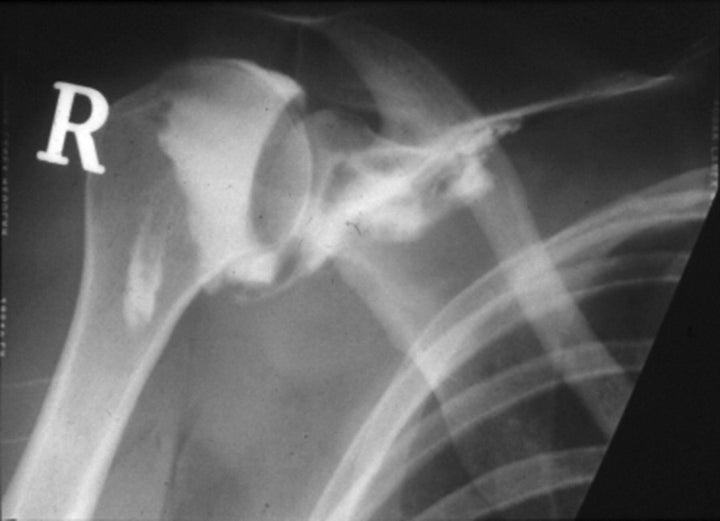
Fig. 1: frozen shoulder x-ray
This X-Ray shows what a frozen shoulder looks like. The dye (white) outlines the tightness in the shoulder joint.
This can be a very painful problem, which severely affects sleep and activity, lasting months if not years. However, this can be easily treated usually without the need for surgery.
The main treatment options for frozen shoulder are:
- injections
- medication
- stretching
- exercises
- physiotherapy
- massage
The key strategy with frozen shoulder is to keep the shoulder moving to have a better chance to recover.
In terms of medications the most prescribed are anti-inflammatory drugs and pain-killers. Your family doctor will be able to advise on appropriate medication. Cortisone (steroid) injections into the joint are an option but may offer short term relief.
Physiotherapy and massage have a role depending on the phase of the frozen shoulder. Following an injection or after a release, physiotherapy and massage therapy can be essential in helping to improve the range of motion in the shoulder joint. Exercises are recommended to maintain movement and strength. The aim of the exercises is to keep the shoulder mobile and avoid further stiffness.
Aggressive and painful manipulation of the shoulder may aggravate the condition and should be avoided.
There is a relatively new injection technique available called Hydrodilatation (hydrodistension) where fluid is injected in the shoulder joint to provide relief and a sensation of stretching. This fluid is a combination of anti-inflammatory, local anaesthetic and sterile saline.
Surgery is the last resort and is indicated for patients with severe frozen shoulder, where less invasive measures have not helped or for those patients where there is damage to other structures.
Exercise is critical. Here's some recommended exercises for frozen shoulder:
Exercise 1 - Pendular stretching*
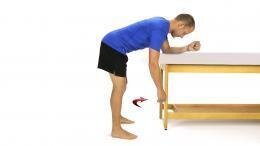
Swinging your arm forwards, backwards, towards body, away from body, clockwise and then anti clockwise. 10 times in each direction.
Exercise 2 - Active flexion*
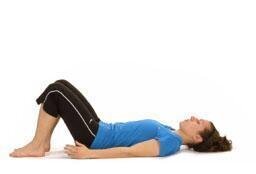
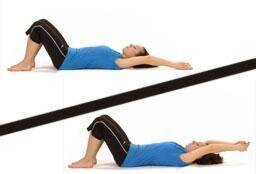
-Lie on your back with your knees and hip bent. The injured arm is resting at your side.
-Bend your elbow and lift your arm overhead as high as possible.
-Straighten your elbow once it reaches 90 degrees.
-If the exercise is to difficult, clasp your hands together and use the other arm to help increase the movement.
-Maintain the position, lower your arm and repeat.
Exercise 3 - Assisted External Rotation*
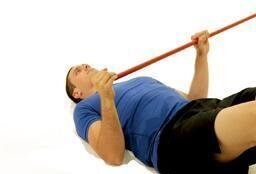
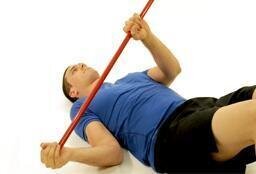
-Lie on your back with knees bent and place each hand at either ends of the stick.
-Keeping the affected elbow against the body at all times, move your hand away from the body and increase the mobility by pushing the hand with the stick.
-Maintain the position, return to initial position and repeat.
Exercise 4 - Assisted Abduction*
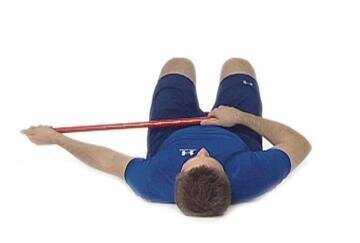
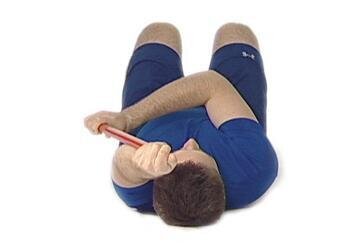
-Lie on your back with knees bent and place each hand at each ends of the stick.
-Slowly move the affected arm away from your body and increase the mobility by pushing the stick with the good arm.
-Push arm up as high as possible.
-Maintain the position, lower your arm and repeat.
Note: affected arm should not be doing any of the movement.
*These exercises are a guide but any exercise regime should be conducted with prior consultation with your healthcare professional/GP. You should stop if you experience any pain or discomfort and seek advice.
How long will my shoulder stay frozen?
Each case is different, but the freezing phase can last between 2 and 9 months or a whole year. This phase is characterised by constant pain and very limited range of movement.
When the shoulder is in the frozen phase, it becomes stiffer over time and this can go on for another 12 months. Sometimes the freezing and frozen phases overlap.
The thawing-out phase starts the recovery of functionality and the easing of the pain. The improvement can take between 12 to 24 months.
In 80% of patients the pain resolves completely but some people are left with a small and permanent restriction of range of motion. This loss of motion does not usually cause any long term problems.
An x-ray is always recommended in the assessment of the stiff, painful shoulder.
See graph.
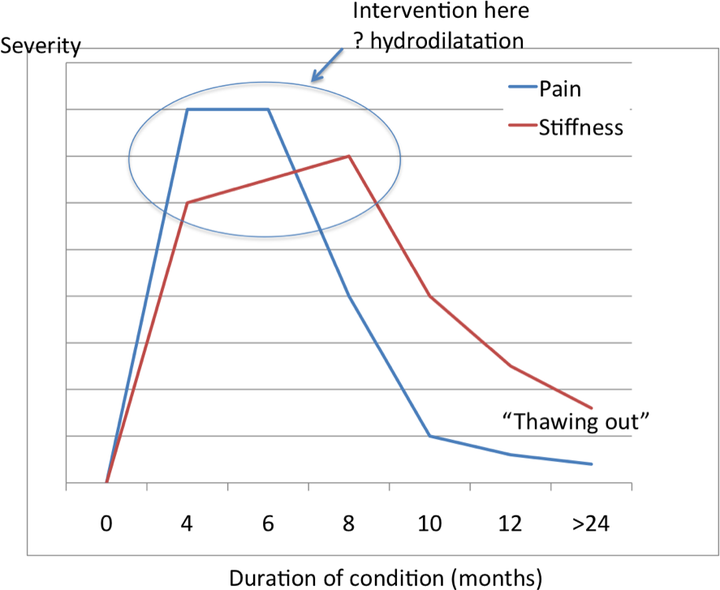
Fig. 2: duration of frozen shoulder
These exercises are a guide but any exercise regime should be conducted with prior consultation with your healthcare professional/GP. You should stop if you experience any pain or discomfort and seek advice.